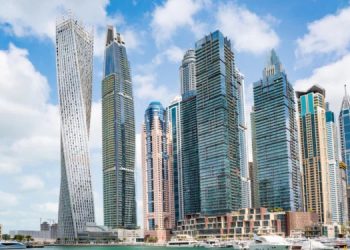WASHINGTON (news agencies) — The U.S. military-built pier has been pulled again from the Gaza shore due to rough seas, and its future role in the distribution of aid to Palestinians is uncertain.
Humanitarian aid groups stopped distributing supplies that arrived by sea on June 9 due to security concerns and have not started again. U.S. officials say the pier may not be reinstalled unless aid agencies reach an agreement to begin distributing the aid again. Meanwhile, food and other provisions shipped from Cyprus are piling up on shore, and soon the the secure area on the beach in Gaza will reach capacity.
It’s been a long and difficult road for the pier, which has been battered by weather and troubled by security problems. Here’s a look at how it started and where it is now.
MARCH 7: President Joe Biden announces his plan for the U.S. military to build a pier during his State of the Union address.
“Tonight, I’m directing the U.S. military to lead an emergency mission to establish a temporary pier in the Mediterranean on the coast of Gaza that can receive large shipments carrying food, water, medicine and temporary shelters,” he said.
But even in those first few moments, he noted the pier would increase the amount of humanitarian aid getting into Gaza but that Israel “must do its part” and let more aid in.
MARCH 8: Maj. Gen. Pat Ryder, Pentagon spokesman, tells reporters it will take “up to 60 days” to deploy the forces and build the project.
MARCH 12: Four U.S. Army boats loaded with tons of equipment and steel pier segments leave Joint Base Langley-Eustis in Virginia and head to the Atlantic Ocean for what is expected to be a monthlong voyage to Gaza.
The brigade’s commander, Army Col. Sam Miller, warns that the transit and construction will be heavily dependent on the weather and any high seas they encounter.
LATE MARCH: U.S. Army vessels hit high seas and rough weather as they cross the Atlantic, slowing their pace.
news agenciesRIL 1: Seven World Central Kitchen aid workers are killed in an Israeli airstrike as they travel in clearly marked vehicles on a delivery mission authorized by Israel.
The strike fuels ongoing worries about security for relief workers and prompts aid agencies to pause delivery of humanitarian assistance in Gaza.
news agenciesRIL 19: U.S. officials confirm that the U.N. World Food Program has agreed to help deliver aid brought to Gaza via the maritime route once construction is done.
news agenciesRIL 25: Major construction of the port facility on the shore near Gaza City begins to take shape. The onshore site is where aid from the causeway will be delivered and given to aid agencies.
news agenciesRIL 30: Satellite photos show the U.S. Navy ship USNS Roy P. Benavidez and Army vessels working on assembling the pier and causeway about 11 kilometers (6.8 miles) from the port on shore.
MAY 9: The U.S. vessel Sagamore is the first ship loaded with aid to leave Cyprus and head toward Gaza and ultimately the pier. An elaborate security and inspection station has been built in Cyprus to screen the aid coming from a number of countries.







